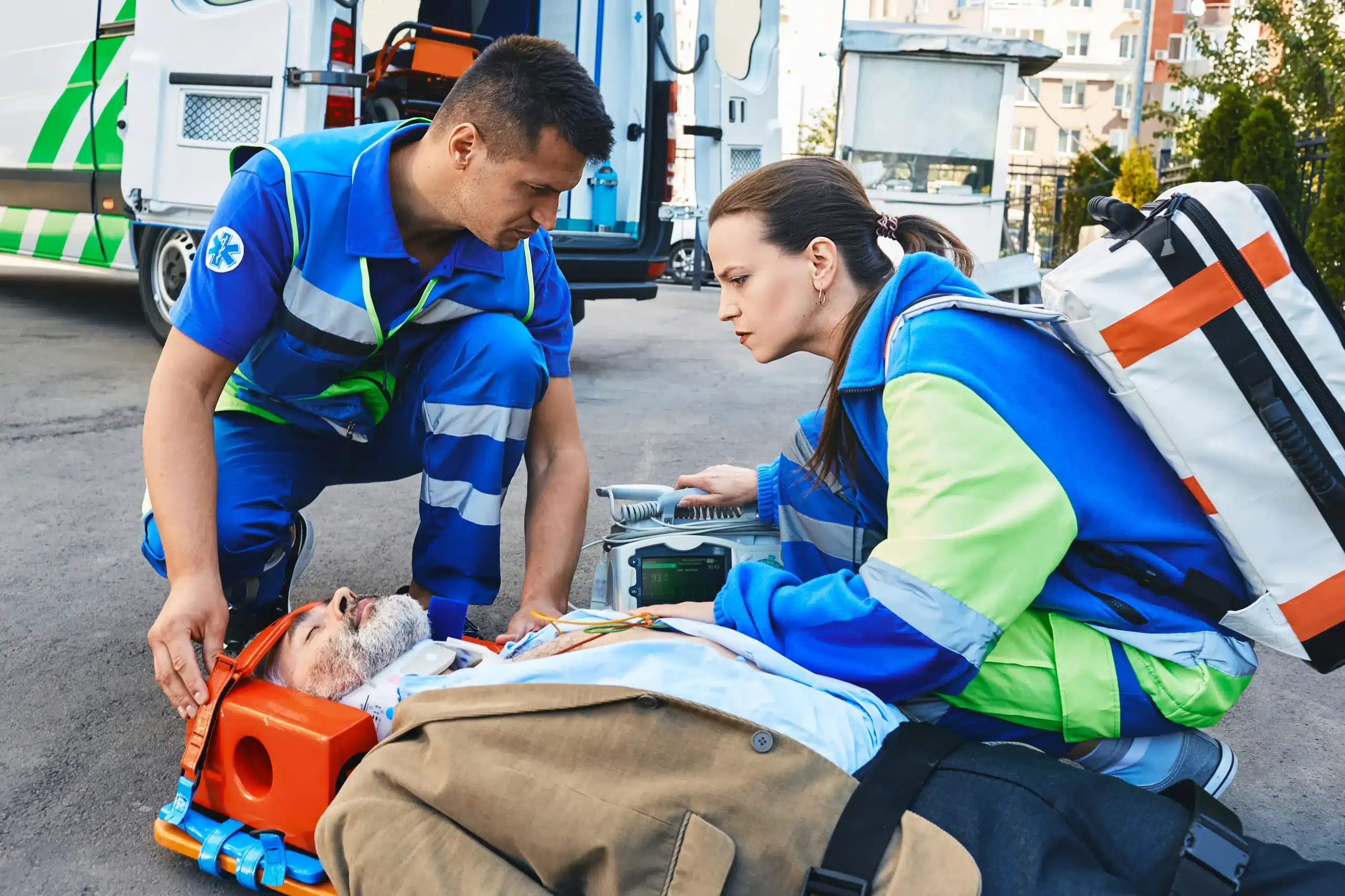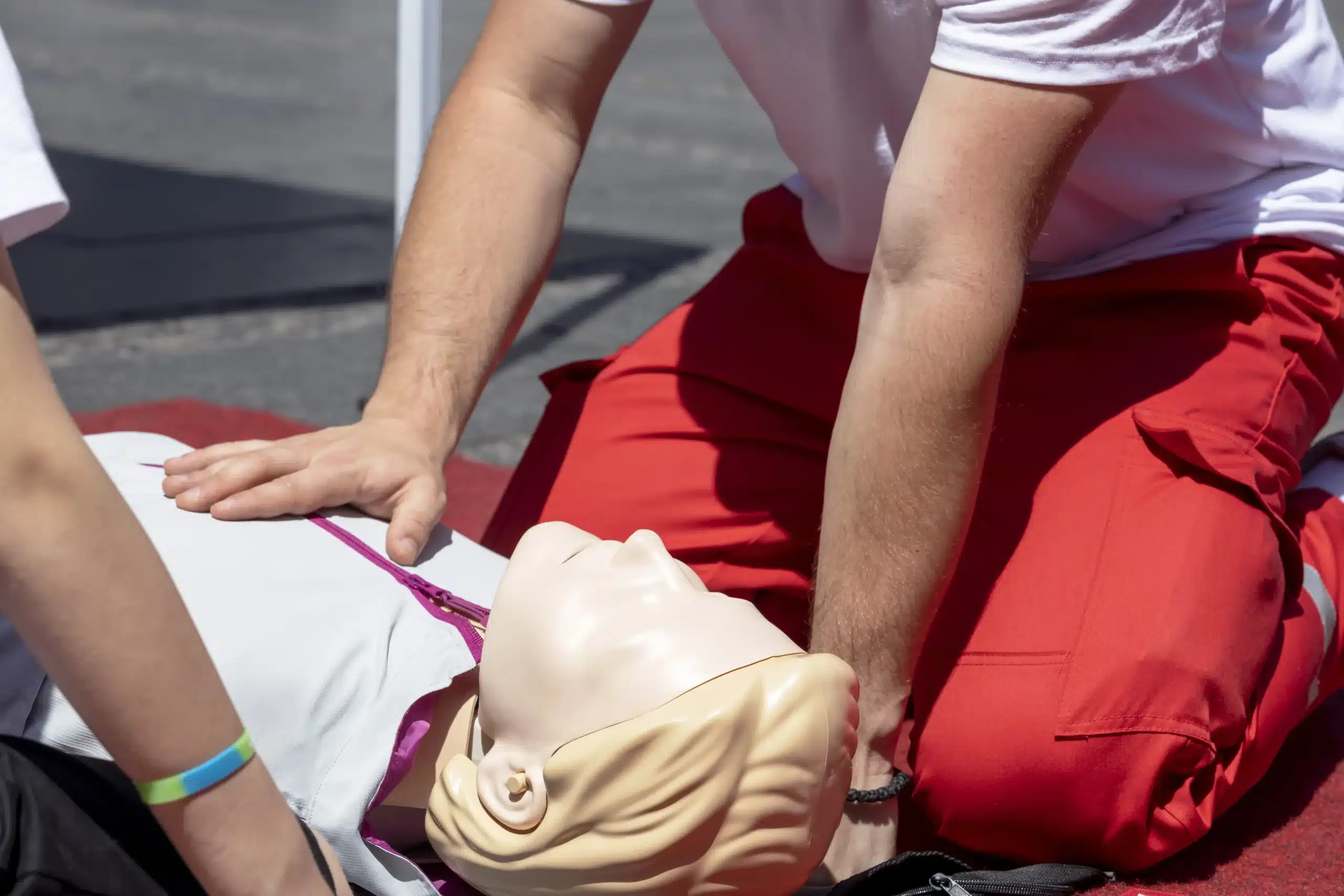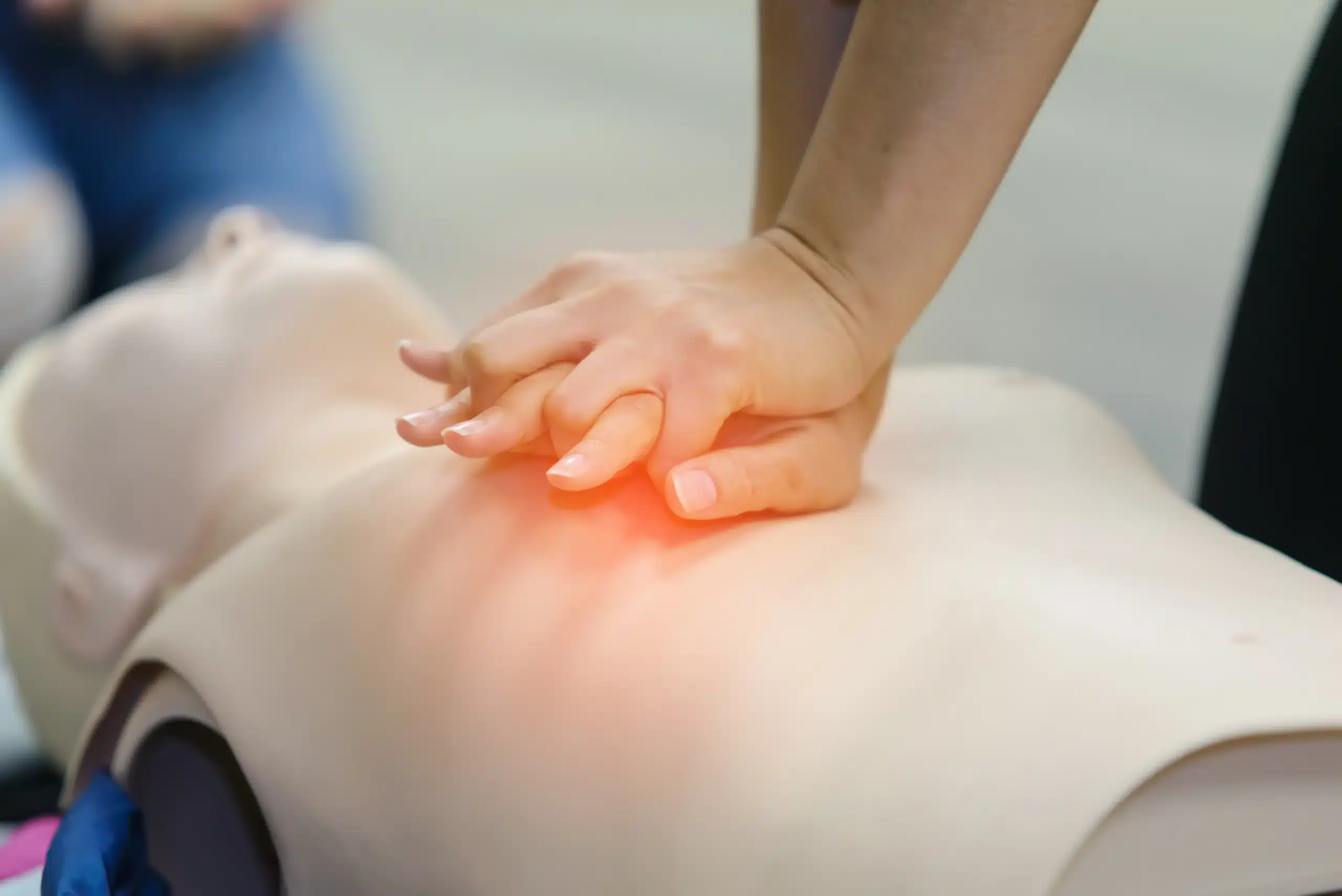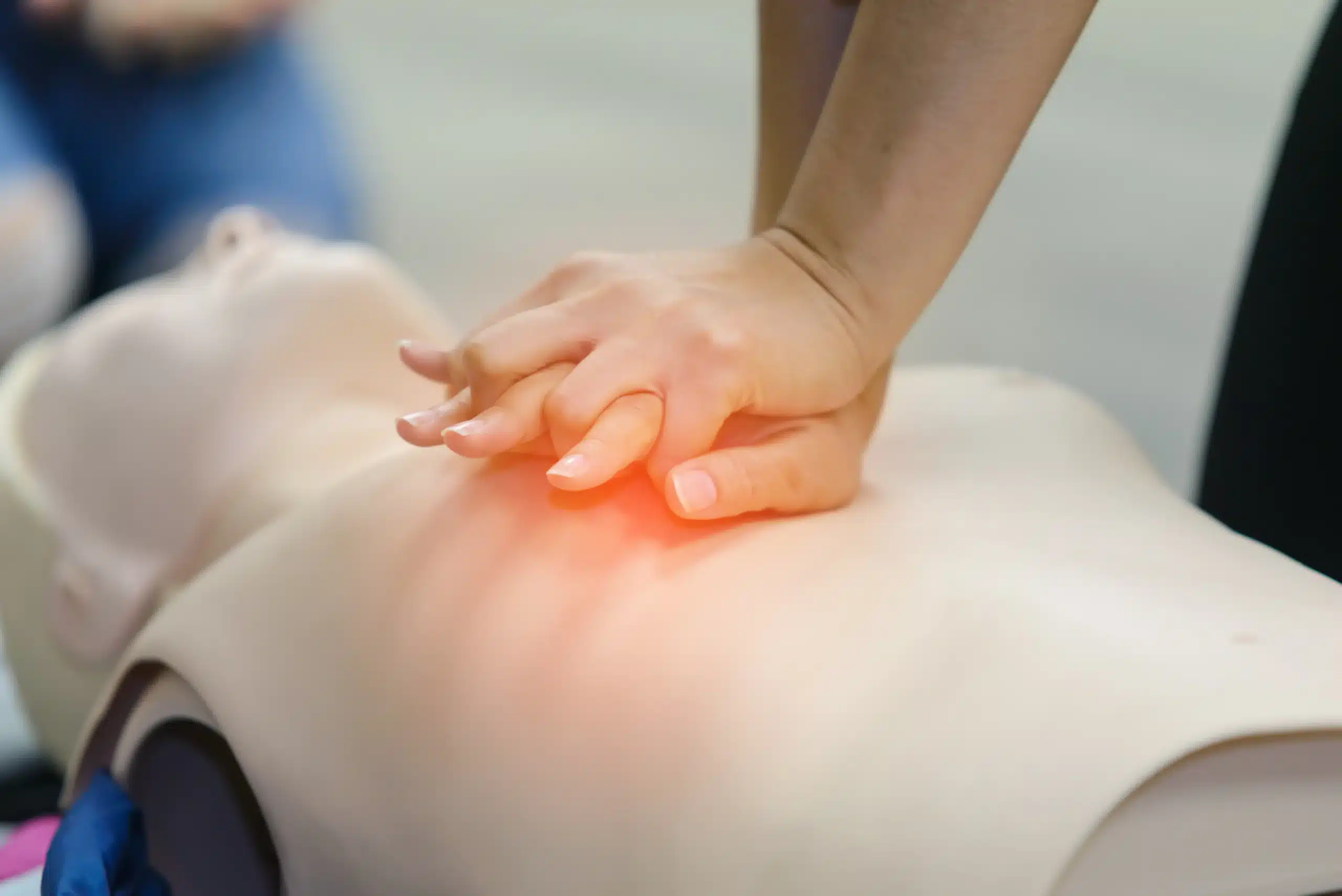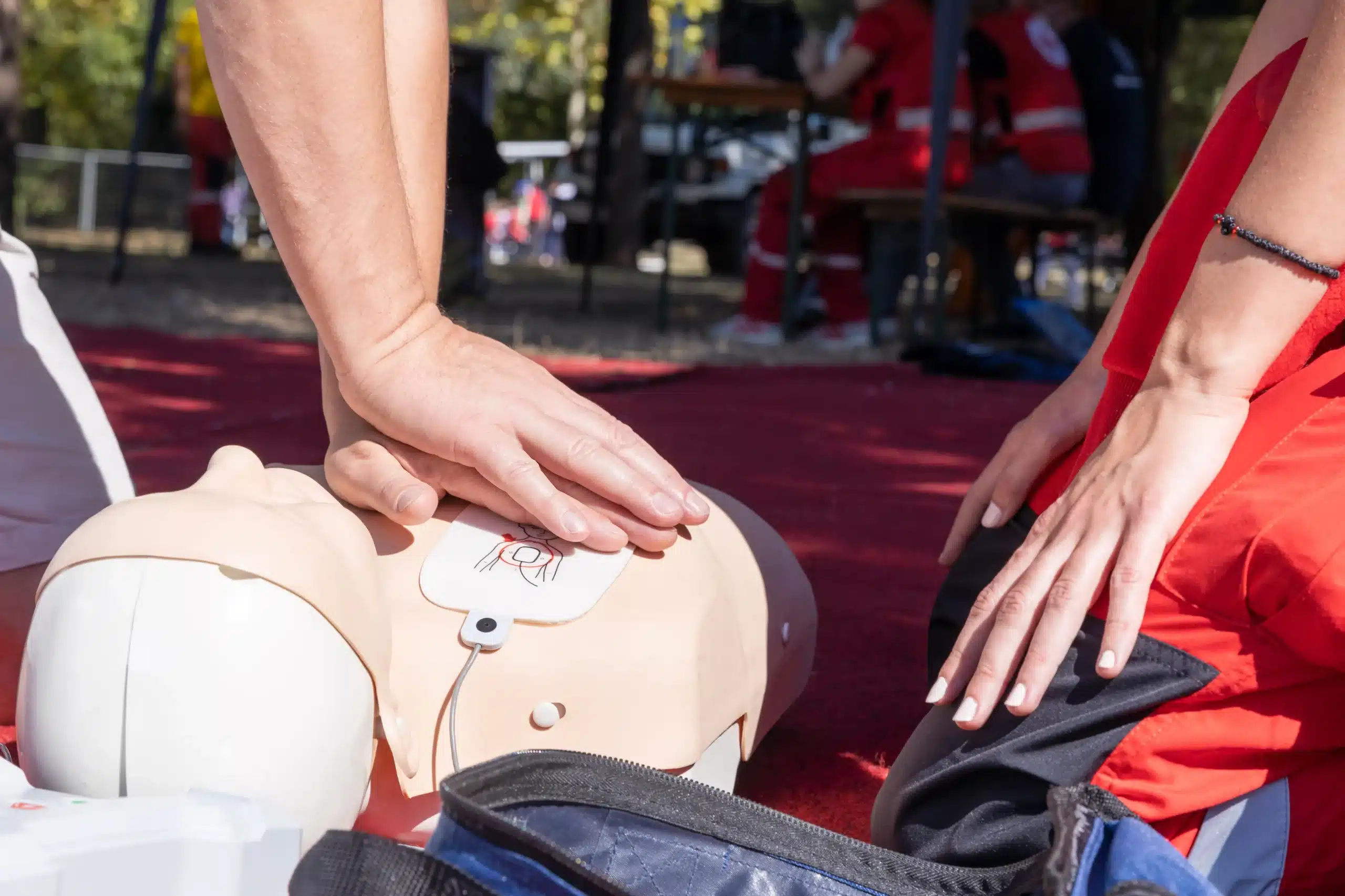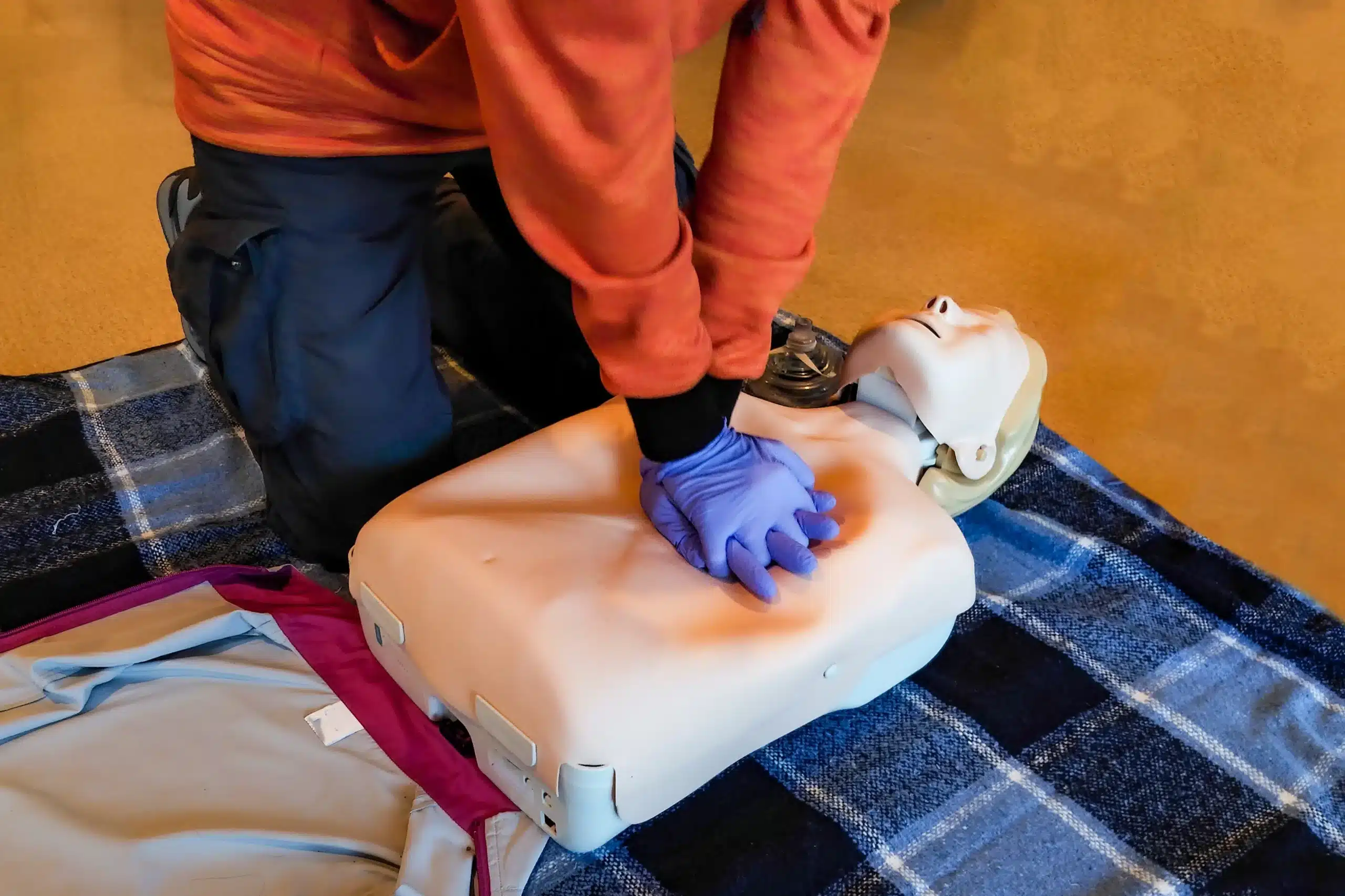Accidents happen. Medical emergencies can arise unexpectedly. Being equipped to handle these situations can bring peace of mind and potentially save lives. This guide explores the world of first-aid in Palo Alto, offering a practical overview of the importance of first-aid training and the various courses available. We’ll discuss the different levels of certification, from basic first aid and CPR to more advanced courses like BLS, ACLS, and PALS. Whether you’re a healthcare provider, a concerned parent, or simply someone who wants to be prepared for anything, this guide will help you understand the options for first-aid training in Palo Alto and choose the right course to meet your needs.
Key Takeaways
- First-aid training is for everyone: These skills are valuable for anyone who wants to be prepared for emergencies, not just medical professionals. Explore the various course options available, including online, in-person, and blended learning formats.
- Find the right course for your needs: Consider factors such as certification, cost, class size, and specialized training options when selecting a first-aid course. Contact providers directly to get all your questions answered.
- Stay current with first-aid practices: Refresh your skills and knowledge regularly through refresher courses and stay informed about the latest guidelines. This ongoing learning ensures you can provide effective assistance when needed.
What is First-Aid Training in Palo Alto?
First-aid training equips you with the skills to respond effectively to medical emergencies. In Palo Alto, these courses cover a range of situations, from minor injuries like cuts and burns to more serious incidents requiring CPR. Learning these skills can make a real difference.
What is First-Aid and Why is it Important?
First-aid is the immediate assistance given to someone suffering a sudden illness or injury. It’s the crucial bridge between the incident and professional medical help. It can save lives. Studies show that timely first-aid can prevent fatalities; the Red Cross found that 59% of fatal injuries could have been avoided with prompt action. Beyond the life-saving aspect, first-aid training builds confidence and teaches you to manage stress during emergencies. It provides invaluable life skills applicable in various situations. Knowing how to react calmly and effectively can bring peace of mind to you and those around you.
Types of First-Aid Courses
Palo Alto offers a variety of first-aid courses catering to different needs and skill levels. You can find training in standard first-aid, CPR, BLS, ACLS, PALS, and more. These courses are often available daily, making it convenient to fit training into your schedule. Some providers, like the Oshman Family JCC, offer blended learning options combining online instruction with in-person practice. This flexible approach allows you to learn the material at your own pace and then apply it in a hands-on environment. Safety Training Seminars offers American Heart Association certified courses.
Who Needs First-Aid Training?
While healthcare professionals and first responders benefit significantly from first-aid training, these skills are valuable for everyone. Teachers, parents, students, corporate employees—anyone can find themselves in a situation requiring first-aid. Knowing how to respond can protect your loved ones, colleagues, or even strangers. It empowers you to take action and potentially make a difference. Consider first-aid training not just as a skill, but as an essential part of being a prepared and responsible member of the community.
Top First-Aid Training Providers in Palo Alto
Finding the right first-aid training can feel overwhelming, so I’ve compiled a list of reputable providers in Palo Alto. This list includes a variety of options, from nationally recognized organizations to local businesses, each with its own strengths.
Safety Training Seminars
Safety Training Seminars, a woman-owned American Heart Association (AHA) Training Center, offers various AHA courses, including CPR, First Aid, BLS, ACLS, and PALS. They focus on providing high-quality training and offer classes daily throughout Palo Alto and surrounding areas like Redwood City and Menlo Park. This flexible schedule makes it easier to find a class that fits your availability. Learn more about their courses and schedules on their website.
Bay Area CPR
Bay Area CPR specializes in AHA-certified courses, covering everything from basic CPR and First Aid to advanced certifications like BLS, ACLS, and PALS. They also offer more specialized training programs, such as the Neonatal Resuscitation Program (NRP) and EMSA Pediatric CPR & First Aid. This makes them a suitable choice for both healthcare professionals seeking advanced certifications and individuals looking for basic life support training. Explore their programs on the Bay Area CPR website.
American Red Cross
The American Red Cross is a well-known provider of first-aid and CPR training. Their Adult First Aid/CPR/AED course provides a comprehensive overview of essential life-saving skills. Participants receive a helpful Ready Reference card with step-by-step instructions for handling emergencies. Find course details and access participant materials on the American Red Cross website.
Stanford Health Care
Stanford Health Care offers various CPR and first-aid courses, including BLS, ACLS, and PALS certification classes. Their training programs cater to both healthcare providers and the general public, with high-quality instruction for all skill levels. Explore their course catalog on the Stanford Health Care website and find a class that fits your needs.
Oshman Family JCC
The Oshman Family JCC (OFJCC) in Palo Alto offers a blended learning Adult and Pediatric First Aid/CPR/AED course. This course covers responding to emergencies for adults, children, and infants, making it a valuable resource for parents, caregivers, and anyone interested in comprehensive first-aid training. Learn more on the OFJCC website.
Choose the Right First-Aid Course
Finding the right first-aid course depends on your specific needs and learning style. Consider these factors to help you decide:
Course Formats: Online, In-Person, and Blended
First-aid courses come in various formats. Online courses offer flexibility, letting you learn at your own pace. In-person classes provide hands-on practice and direct interaction with an instructor. Blended learning combines online modules with an in-person skills session, offering a balance of flexibility and practical experience. The American Red Cross offers both classroom and blended learning for their first-aid/CPR/AED programs, giving you options to fit your schedule.
Certification and Accreditation
Make sure your chosen course provides a nationally recognized certification, such as those from the American Heart Association. All courses from Palo Alto CPR Classes are AHA-certified, ensuring your credentials are valid and respected. Certifications are typically valid for two years.
Cost and Value
Course costs vary, so compare pricing and what each course includes. While some providers may advertise low prices, it’s always a good idea to contact them directly for specifics. Ask if the course fee covers study materials, certification fees, and any other expenses. For details on our pricing and our low price guarantee, contact us.
Class Sizes and Learning Experience
A smaller class size can greatly improve your learning experience. Look for courses with a lower student-to-teacher ratio, ideally around 6-10 students. This allows for more individual attention, plenty of practice time, and opportunities to ask questions.
Specialized Training
Some first-aid courses are designed for specific groups, with tailored content and skills practice.
Healthcare Professionals
Healthcare providers often need specialized training, like the RQI program from Palo Alto CPR Classes. This program combines online learning with a hands-on skills test, offering a convenient way to maintain your certification. Healthcare professionals who need advanced life support training can also pursue ACLS and PALS certifications. Learn more about our ACLS and PALS courses on our website.
Parents and Childcare Providers
Parents, nannies, and childcare providers benefit from specialized courses that focus on pediatric first aid and CPR. These courses address common childhood injuries and emergencies, giving caregivers the skills to respond confidently and effectively.
General Public
Even without specific job requirements, knowing basic first aid and CPR is invaluable. It allows you to help in emergencies and potentially save a life. Consider a basic first aid and CPR course to be prepared for unexpected situations. We offer group discounts, making it more affordable for families and community groups to learn these essential skills together.
Get Started with First-Aid Training
So, you’re ready to learn first-aid skills? Great! Whether you’re a parent, teacher, healthcare worker, or just someone who wants to be prepared, knowing first-aid can make a real difference. This section walks you through the process of getting trained in Palo Alto.
Register for a Course
Finding the right first-aid course is the first step. Palo Alto offers a variety of options for first-aid training, including CPR, BLS, ACLS, and PALS. Providers like Safety Training Seminars offer daily classes, making it easy to find a time that works for your schedule.
What to Expect During Training
First-aid courses blend classroom instruction with hands-on practice. You’ll learn techniques for handling various emergencies, from cuts and scrapes to more serious situations like breathing and cardiac events in adults, children, and infants. Working with manikins and participating in simulations will help build your confidence. Most courses run between two and four hours.
Post-Course Support and Resources
After your training, you’ll have access to resources to help you remember what you’ve learned. Many organizations provide quick reference guides, like the American Red Cross’s Adult First Aid/CPR/AED Ready Reference card, which offers clear instructions and helpful visuals. Equipping your workplace or home with a well-stocked first aid kit and an AED is also a good idea.
Maintain Your Certification
Most first-aid certifications are valid for about two to three years, while CPR certifications are typically valid for two years. Check with your certifying organization or a local provider like Safety Training Seminars for recertification options in Palo Alto. It’s a good idea to take refresher courses annually to keep your skills sharp and stay up-to-date on any changes in first-aid procedures.
Maximize Your First-Aid Skills
Learning first aid is a continuous journey, not a one-time event. Once you’ve completed your initial training, the real learning begins—putting your knowledge into practice and staying up-to-date. This section offers guidance on how to make the most of your first-aid skills.
Common First-Aid Misconceptions
One common misconception is that first-aid training is only for medical professionals. This simply isn’t true. First-aid skills are valuable for everyone, from parents and teachers to office workers and construction workers. Emergencies can happen anywhere, and having basic first-aid knowledge can make a real difference. Consider signing up for a class today.
Apply Your First-Aid Skills
The best way to solidify your first-aid knowledge is to use it. Look for opportunities to practice your skills in safe, controlled environments. This could involve volunteering at community events, participating in refresher courses, or even running through scenarios with friends or family. Safety Training Seminars offers a variety of courses to help you build a strong foundation in first aid. The more you practice, the more confident and prepared you’ll be in a real emergency.
Continue Learning and Improving Your Skills
First aid is an evolving field, with new techniques and best practices constantly emerging. Make a commitment to ongoing learning by taking refresher courses every couple of years to stay current with the latest guidelines. The American Heart Association provides excellent resources and materials to support your continued learning. Staying informed ensures you’re providing the most effective care possible.
Community Events and Resources in Palo Alto
Palo Alto and the surrounding areas offer a wealth of resources for those interested in first aid. Check with local community centers, hospitals, and organizations like the American Red Cross for information on first-aid courses, workshops, and events. These resources can provide valuable opportunities to connect with other people interested in first aid and enhance your skill set. You can also explore options for integrating first-aid training into school policies and programs, creating a safer environment for students and staff.
Related Articles
- First Aid Training in Menlo Park: Practical Guide
- Pediatric CPR & First-Aid Training in Palo Alto – Palo Alto CPR Classes
- Prioritize Workplace CPR and First-Aid Training for Safety
- First-Aid Training in Redwood City: Complete Guide
- Pediatric Advanced Life Support (PALS) in Menlo Park – Palo Alto CPR Classes
Frequently Asked Questions
What’s the difference between CPR and First Aid? CPR, or Cardiopulmonary Resuscitation, focuses specifically on restoring breathing and circulation. First Aid encompasses a broader range of skills for treating various injuries and illnesses, including CPR. Think of CPR as one piece of the larger First Aid puzzle.
How do I choose the right First Aid course in Palo Alto? Consider your specific needs. Are you a healthcare professional needing recertification, a parent wanting to learn child-specific techniques, or someone seeking general knowledge? Think about your learning style (online, in-person, or blended) and compare course costs, certification types, and class sizes. Don’t hesitate to contact providers directly with questions.
How often do I need to renew my First Aid and CPR certification? Most First Aid certifications are valid for two to three years, while CPR certifications typically last two years. Regular refresher courses are a good idea, even if not strictly required for renewal, to keep your skills sharp and knowledge current.
What if I can’t afford a First Aid course? Explore options like group discounts, payment plans, or community programs that may offer free or reduced-cost training. Contact local organizations like the Red Cross or community centers to inquire about available resources. Investing in First Aid training is invaluable, so explore all available avenues.
How can I practice my First Aid skills outside of a formal course? Look for volunteer opportunities in your community, participate in mock drills with friends or family, or take refresher courses. Even reviewing the material regularly can help reinforce what you’ve learned. Consistent practice builds confidence and prepares you to respond effectively in real-life situations.

